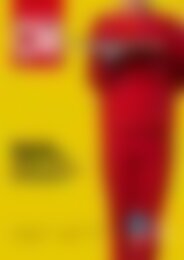CREDIT MANAGEMENT JULY and August 2022
THE CICM MAGAZINE FOR CONSUMER AND COMMERCIAL CREDIT PROFESSIONALS
THE CICM MAGAZINE FOR CONSUMER AND COMMERCIAL CREDIT PROFESSIONALS
Create successful ePaper yourself
Turn your PDF publications into a flip-book with our unique Google optimized e-Paper software.
COUNTRY FOCUS
AUTHOR – Adam Bernstein
(2014 census data). This is followed by
Fez with 1.1m, Tangier with 947,000,
Marrakesh with 929,000 and Sale with
890,000. Rabat, the capital has just under
578,000 inhabitants. There are a further 27
towns and cities with more than 100,000
residents. Another 33 towns have between
50,000 and 100,000 inhabitants.
Now look at Western Sahara; it’s so
much smaller. Again, based on 2014
census data, the ‘capital’ Laayoun has
217,000 people, Ad-Dakhla 106,000, Smara
57,000, Cape Bojador 42,000, and El Marsa
has just under 18,000. Beyond that are 29
settlements that need little more than an
abacus to count their residents.
The Moroccan population is young with
a median age of 29.3 years; 43.59 percent
is under 25 years old. It is 98 percent
Muslim.
ECONOMY
Morocco’s economic growth is on an
upward trend, albeit with some instability.
GDP in 2000 sat at $41bn, $93.22bn in 2010,
$110bn in 2014, $101bn in 2015, $119bn
2019, but $112bn 2020.
The Middle East Institute takes the view
that over the past decade, Morocco made
great progress in climbing up the global
Doing Business Index (DBI), jumping
from the rank of 130 in 2009 to 53 in
2020. And it’s notable that in 2010 the
Government established the Comité
National de l'Environnement des Affaires
to offer recommendations and coordinate
efforts to improve the country's DBI
ranking.
However, the Institute reckons that a
high and improving DBI ranking has not
translated into economic growth. In fact,
the average economic growth between
2010 and 2020 was just 3.3 percent and
in 2016, Morocco achieved an economic
growth rate of only 1.06 percent, even
though in the same year its DBI ranking
rose from 87 to 71.
Part of the problem seems to be a
dysfunctional judicial system that stunts
private investment. Globes, an Israeli
daily, wrote in May 2021, that Morocco
has ‘one of the less effective legal systems
in the region… (it uses a combination of)
the French civil code, which is considered
rigid and encourages enforcement… and
the informal and traditional methods of
the North African tribes...’
A 2022 document from Thomson
Reuters paints a slightly rosier picture. It
quotes the IMF as expecting GDP growth
to have reached 4.5 percent in 2021 and
will be 3.9 percent in 2022. Not world
beating but considering that COVID
pushed the country into a severe
recession, a positive.
INDUSTRIES AND SECTORS
There are a number of key sectors in
Morocco.
AEROSPACE
Morocco has 24 airports and Ecomnews
Med reported that the National Airports
Office plans to invest $595m developing
them – especially those in and around
Casablanca and Tangier. In terms of
projects, Rabat-Sale airport is to be
expanded and a third terminal added to
Casablanca International. There’s also a
project worth an estimated $520m for a
second airport in Marrakech.
Brave | Curious | Resilient / www.cicm.com / July & August 2022 / PAGE 21
Royal Air Maroc operates 52 aircraft and
as for the armed forces, they primarily fly
US and French aircraft.
Either way, opportunities exist in
maintenance, services, training, parts, air
navigation and radio systems, and security
devices. The US Trade Department notes
that over 140 aerospace companies are
represented in the country.
AGRICULTURE
In 2015 this sector was worth around
14 percent of Morocco’s GDP according
to the Oxford Business Group (OBG),
but 11.7 percent according to Statista
Morocco
continues on page 22 >


















